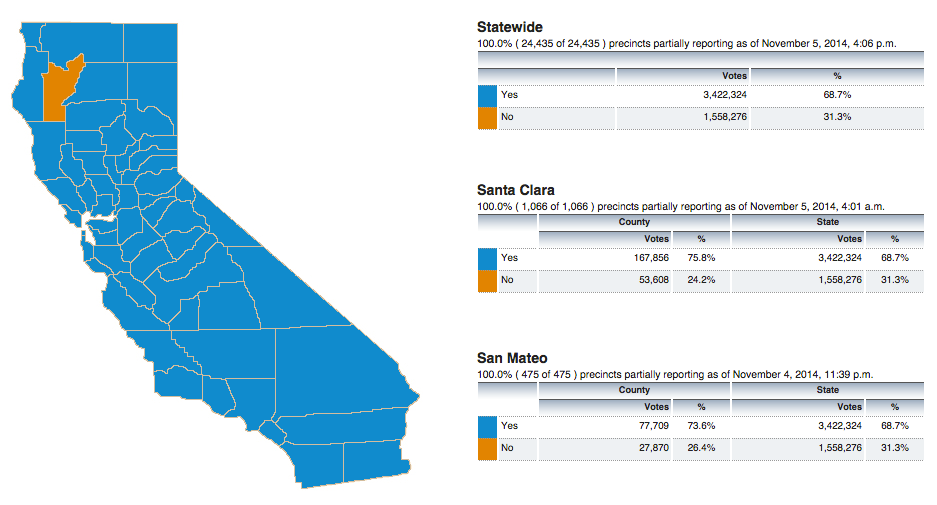
California Proposition 2, otherwise known the “Rainy Day Fund,” landed a widespread “yes” in Tuesday’s election results, winning 57 of 58 counties and a statewide majority vote of 68.7 percent according to a vote count from the California Secretary of State.
On the Peninsula, the victory for Proposition 2 showed even higher margins, with 73.6 percent of voters in San Mateo County and 75.8 percent of voters in Santa Clara County.
The proposition requires an amount of state money be set aside annually in a Budget Stabilization Account, or rainy day fund, to curb economic fluctuations between boom and bust years and help the state pay off its crippling, hundred-billion-dollar debts.
“It’s common sense,” said Phillip Ung, campaign manager for California Forward Issues Action Fund, Yes on Proposition 2. “When it comes to saving and paying off debts, this is what voters do around the kitchen table all the time.”
Ung mentioned that details of the rainy day fund legislation are lengthy and complex but boil down to a reactive savings plan designed to move with the markets.
Rainy day fund annual deposits will come from a percentage of the state’s annual general revenue fund, as well as an amount equal to tax revenues when, in prosperous years, capital gains-related tax revenues are greater than a target percentage.
The idea: when markets are up, the fund will absorb more money, and when markets are down, it will take only the prescribed minimum.
Half of the money deposited to the rainy day fund must then be used to pay off state debts and obligations – such as budgetary loans and state-level pension plans – over the next fifteen years, as mandated by Proposition 2.
“Voters should benefit from stable, high-quality services regardless of economic conditions,” Ung said. “Prop. 2 was the easiest way. The hardest way is tax reform.”
The victory in Tuesday’s election followed a strong campaign for Proposition 2, which gained more than $20 million of contributions and advertised bipartisan support from politicians, party leaders and legislators statewide.
Gov. Jerry Brown actively promoted Proposition 2, in tandem with Proposition 1, in the days leading up to the election.
The most vocal opposition against Proposition 2 came from education advocates fearing it will bring harm to California public schools.
Educate Our State, a grassroots education advocacy organization, put forth the only registered oppositional campaign against Proposition 2, “2 Bad for Kids” – a campaign that failed at the ballot box.
It raised no money but argued that hidden fine print in the rainy day fund shrinks the state’s already low budget priorities for public schools.
“We knew from the get-go that we weren’t going to defeat it. The goal was to raise awareness,” said Katherine Welch, director of Educate Our State.
For more information on Proposition 2, its arguments, and its election results from the California Secretary of State: click here.
(Homepage photo courtesy of Tracy Olson on Flickr via Creative Commons.)
